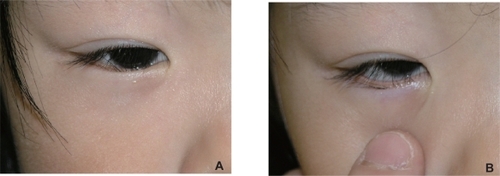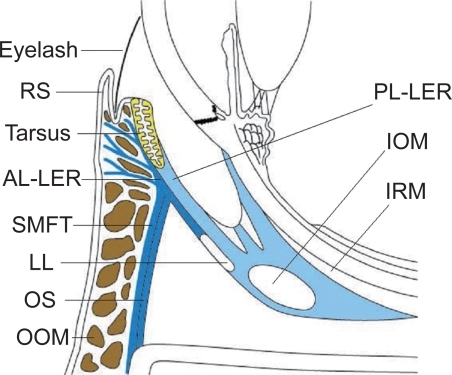Figures & data
Figure 1 A) A 3-year-old girl. Upright position without downward traction of the skin. The eyelashes are directed vertically and rub on the cornea. The redundant skin only touches the eyelash roots and therefore it seems to have a minimal contributing role in eyelash inversion. B) Upright position with downward traction of the skin. The direction of the eyelashes is not changed significantly, and they are still directed to the globe.

Figure 2 A) The same 3-year-old girl. Spine position during general anesthesia without downward traction of the skin. The eyelashes are directed toward the cornea. More redundant skin is observed in the lower eyelid than in the upright position (Figure ) and seems to have more influence of eyelash direction. B) Spine position during general anesthesia with downward traction of the skin. The direction of the eyelashes has not changed significantly compared with the upright position (Figure ).

Figure 3 A diagram of epiblepharon. The eyelash is always directed upright, irrespective of skin redundancy.
